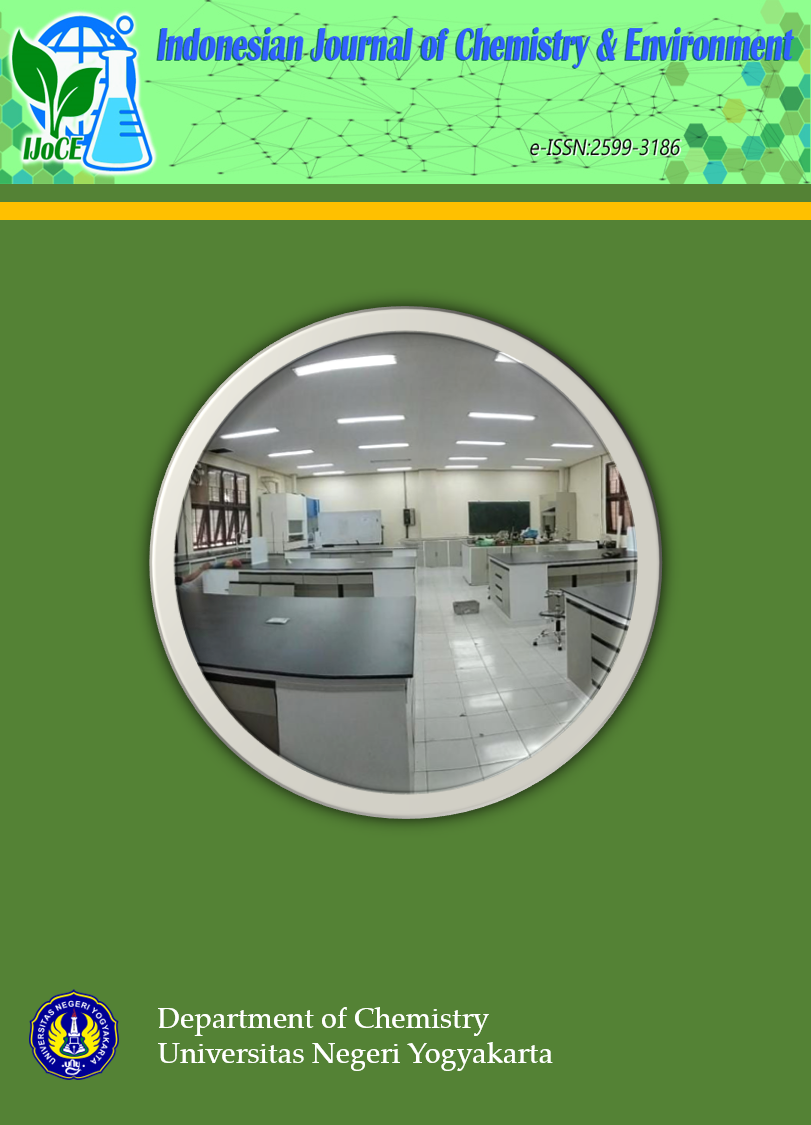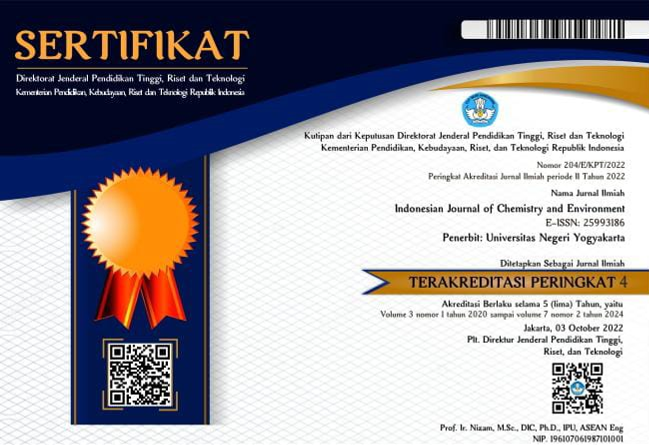Synthesis of Chitosan Sulfate From Crab (Scylla serrata) and its application as adsorbent
DOI:
https://doi.org/10.21831/ijce.v3i1.40819Abstract
Synthesis of chitosan sulfate from crab (Scylla Serrata) shell and its application as Remazol Yellow FG dye adsorbent has been studied. This experiment was conducted to study the effectiveness of chitin from crab shell to be converted into chitosan sulfate and to study the adsorption of chitosan sulfate by Remazol Yellow FG dye. Isolation of chitin from crab shell was done by deproteination and demineralization process. Chitin had been converted into chitosan using demineralization process. Chitosan sulfate was made by reacting chitosan with 1 M ammonium sulfate solution. Characterizations of the chitosan are involving determination of degree of deacetylation. Functional group of chitin, chitosan and chitosan sulfate were determined by FTIR spectroscopy. The dye adsorption of chitosan sulfate was analyzed with UV-Vis spectroscopy. The result showed that rendement of chitin, chitosan and chitosan sulphate were 28.57%, 52.5% and 92%. The degree of deacetilation of chitin and chitosan were 80 – 90% and 70 – 80%. Remazol Yellow FG was adsopr 76.5%.
Downloads
Published
2021-05-19
How to Cite
[1]
Salmahaminati, S. 2021. Synthesis of Chitosan Sulfate From Crab (Scylla serrata) and its application as adsorbent. Indonesian Journal of Chemistry and Environment. 3, 1 (May 2021), 27–32. DOI:https://doi.org/10.21831/ijce.v3i1.40819.
Issue
Section
Articles
Citation Check
License
Authors who publish with this journal agree to the following terms:
- Authors retain copyright under a Creative Commons Attribution–ShareAlike License (CC BY SA) that allows others to share: copy, and redistribute the material in any medium or format, Adapt: remix, transform, and build upon the material, for any purpose, even commercially.
- Authors are able to enter into separate, additional contractual arrangements for the non-exclusive distribution of the journal's published version of the work (e.g., post it to an institutional repository or publish it in a book), with an acknowledgement of its initial publication in this journal.
- Authors are permitted and encouraged to post their work online (e.g., in institutional repositories or on their website) prior to and during the submission process, as it can lead to productive exchanges, as well as earlier and greater citation of published work.










